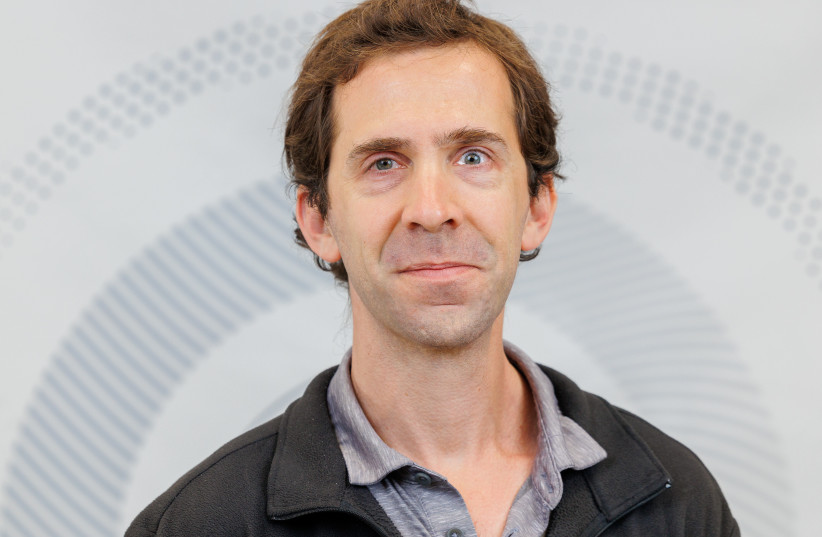Two prestigious European Research Council (ERC) Starting Grants totaling NIS 14 million for their groundbreaking research have been won by a pair of outstanding scientists at Bar-Ilan University (BIU) in Ramat Gan. The recipients whose names were announced by the ERC are Dr. Assaf Ben-Moshe of the chemistry department and Dr. Shahar Alon of the Kofkin Faculty of Engineering.
The ERC is awarding 400 Starting Grants to young scientists and scholars across Europe with a total of €628 million – all to support cutting-edge research in a wide range of fields from medicine and physics to the social sciences and the humanities.
Starting Grants totaling €628 million are being given to young scientists and scholars across Europe, with the money going to support cutting-edge research in a wide range of fields, from medicine and physics to social sciences and humanities.
Ben-Moshe, who was awarded a €1.5 million grant, studies chirality – a fundamental geometric property of objects that exist as two mirror-images that cannot be overlapped in space. A classic example is our left and right hands – when holding the right hand in front of a mirror, the left hand will show in the mirror. Yet, one can never overlap the two, no matter how hard one tries.

Chirality is fundamental across many different hierarchies of nature and is studied in different fields of biology, chemistry, physics, and engineering. It plays a pivotal role in our understanding of the natural world. Nearly all biological molecules including those within our bodies exist in chiral forms, with each mirror image behaving differently. This phenomenon poses a significant challenge in the pharmaceutical sector, where controlling chirality can impact drug efficacy and safety.
Interest in this property dates to the pioneering work of 19th-century French chemist and microbiologist Louis Pasteur and the birth of stereo-chemistry and symmetry considerations in crystallography. Pasteur, while crystallizing left- and right-handed chiral molecules, observed two distinct shapes of crystals – right-handed and left-handed – providing the earliest glimpse into the world of molecular symmetry and its relation to crystal structures.
Ben-Moshe’s project challenges conventional wisdom on the interpretation of Pasteur’s experiment by exploring an innovative theory suggesting that the chiral shapes of crystals may not be solely determined by the shapes of constituent molecules, but rather by intricate defects influencing their structure. These defects, previously overlooked, may hold the key to unraveling the mysteries of chirality in crystals.
This cutting-edge research utilizes advanced electron microscopy techniques to examine nanoscale crystals – structures a billionth of a meter in size. By focusing on these minute crystals, researchers can unveil critical structural details often concealed when studying larger crystals through traditional methods. The BIU project could pave the way for controlling chirality in a wide range of materials, with far-reaching implications for optoelectronics, spintronics, asymmetric catalysis, and more.
Despite vigilant immune surveillance, tumors have a knack for evading the body’s defenses – a phenomenon that has confounded experts for years. Alon, who was awarded a grant of nearly €2 million, aims at dissecting the enigmatic interactions taking place at the cellular level between tumors and the immune system, bringing to light the crucial insights that can potentially reshape the landscape of cancer treatment.
The focus of this cutting-edge research is on the often-overlooked “detection-without-activation” events that transpire when immune cells, particularly T cells, encounter tumor cells. While extensive research has concentrated on the mechanisms of immune cell activation, little attention has been paid to deciphering the implications of these non-activating encounters.
How do immune cells encode information?
The primary question at the heart of Alon’s study is when they come into physical contact with tumor cells, even when the immune response isn't triggered? Could this interaction serve as the elusive key to understanding the evasion tactics employed by tumors? Alon suggests that the mechanism of evasion could show up as discernible physical changes in immune cells upon contact with tumor cells. To unveil this hidden process, the research team will scrutinize biopsies searching for alterations in the gene-expression program of immune cells that have come into contact with tumor cells.
What sets this research apart is the utilization of an innovative technology Alon developed that enables in-situ sequencing with super-resolution. This groundbreaking technology will pave the way for the creation of the first-ever dataset of super-resolved spatial genomics mapping of human biopsies. By scrutinizing tens of thousands of individual interactions between physically touching immune and tumor cell types, this dataset will shed light on previously uncharted territory.
Alon’s team will also develop an advanced imaging technology capable of in situ sequencing of T-cell and B-cell receptors, pinpointing tumor-specific receptors and providing insight into the immune-tumor dialogue. A sophisticated computational framework will be used to identify the genes and pathways central to this intricate crosstalk. He says that the potential ramifications of this research are profound, promising to unveil insights into tumor evasion and offering new directions for potential interventions.
